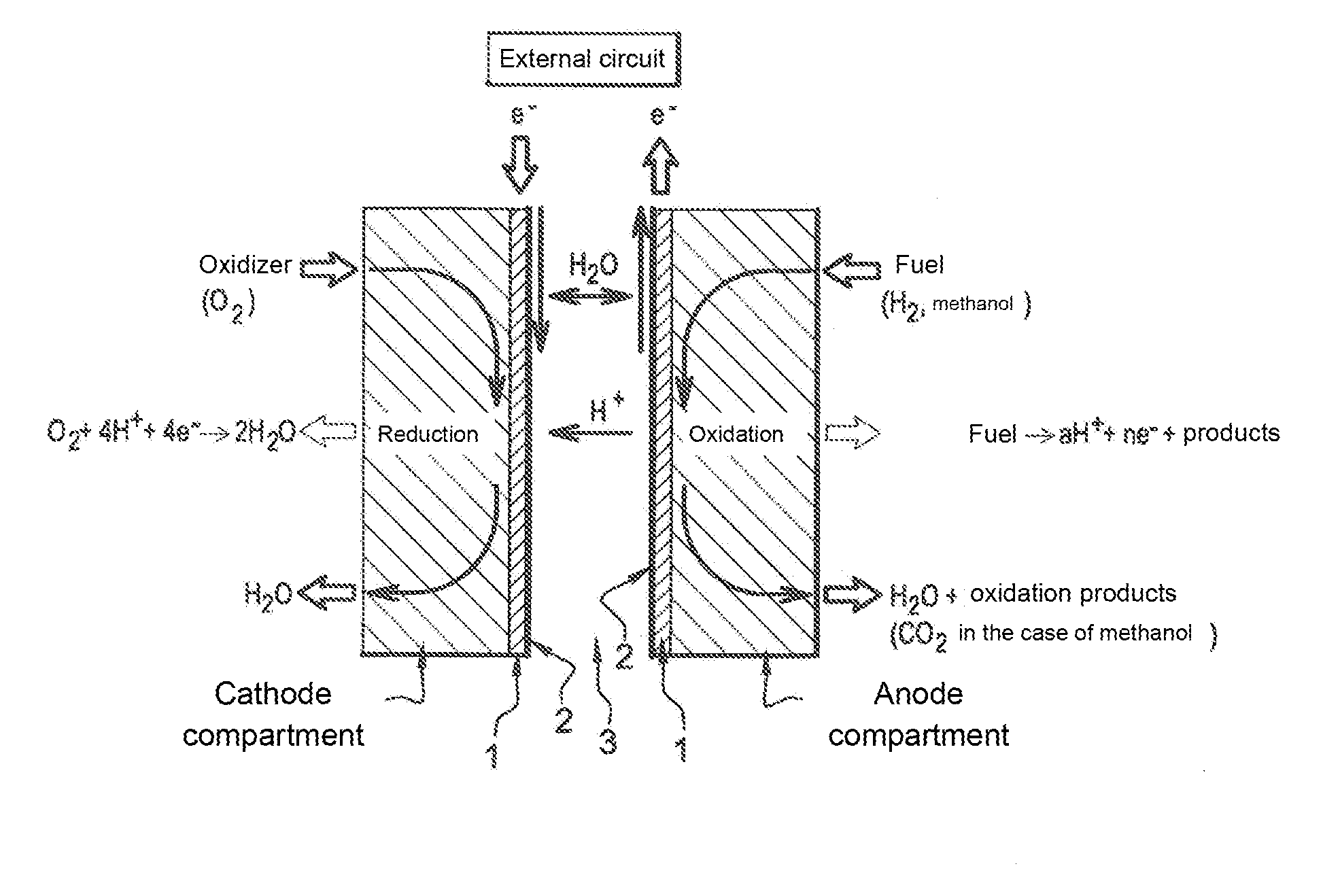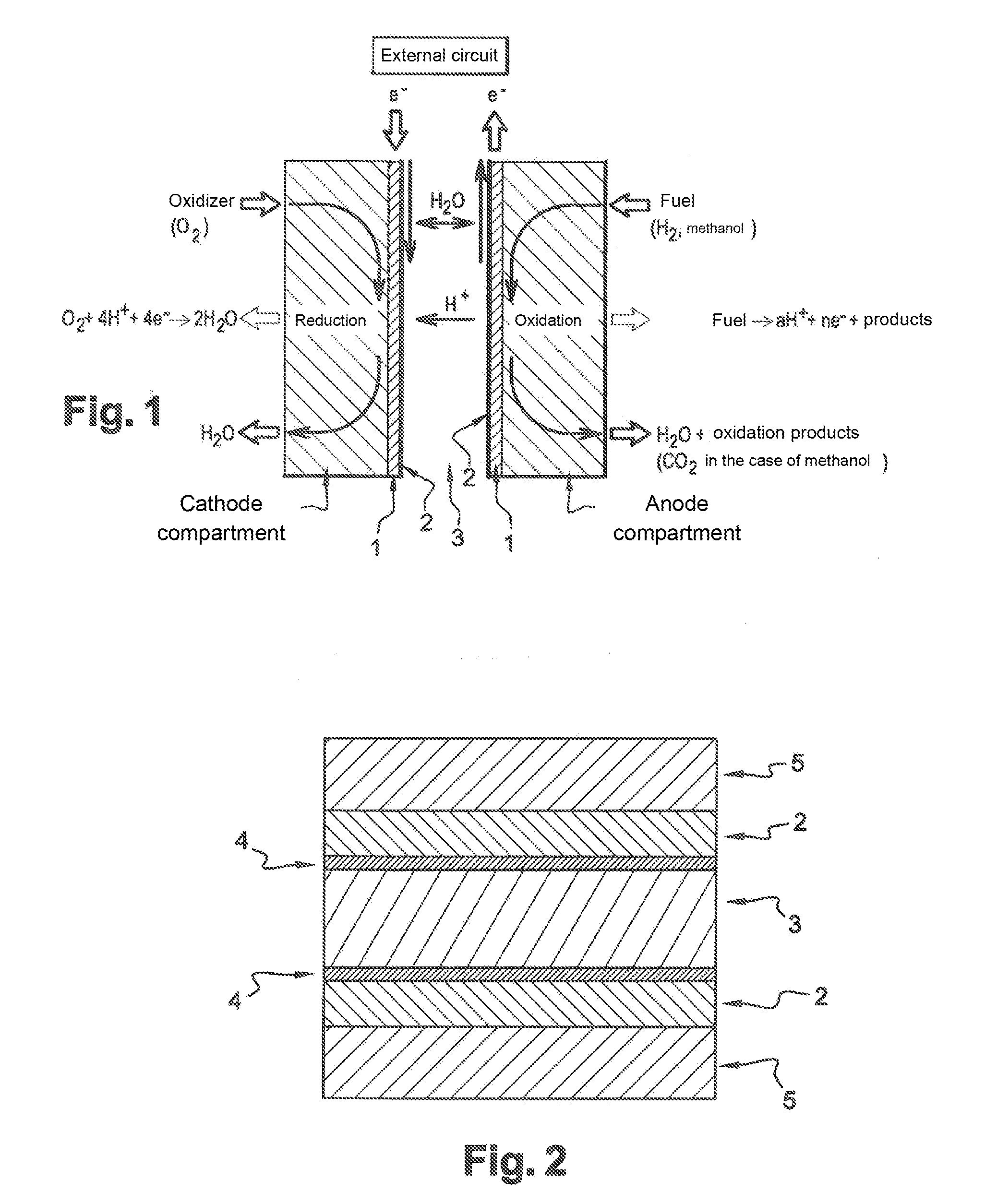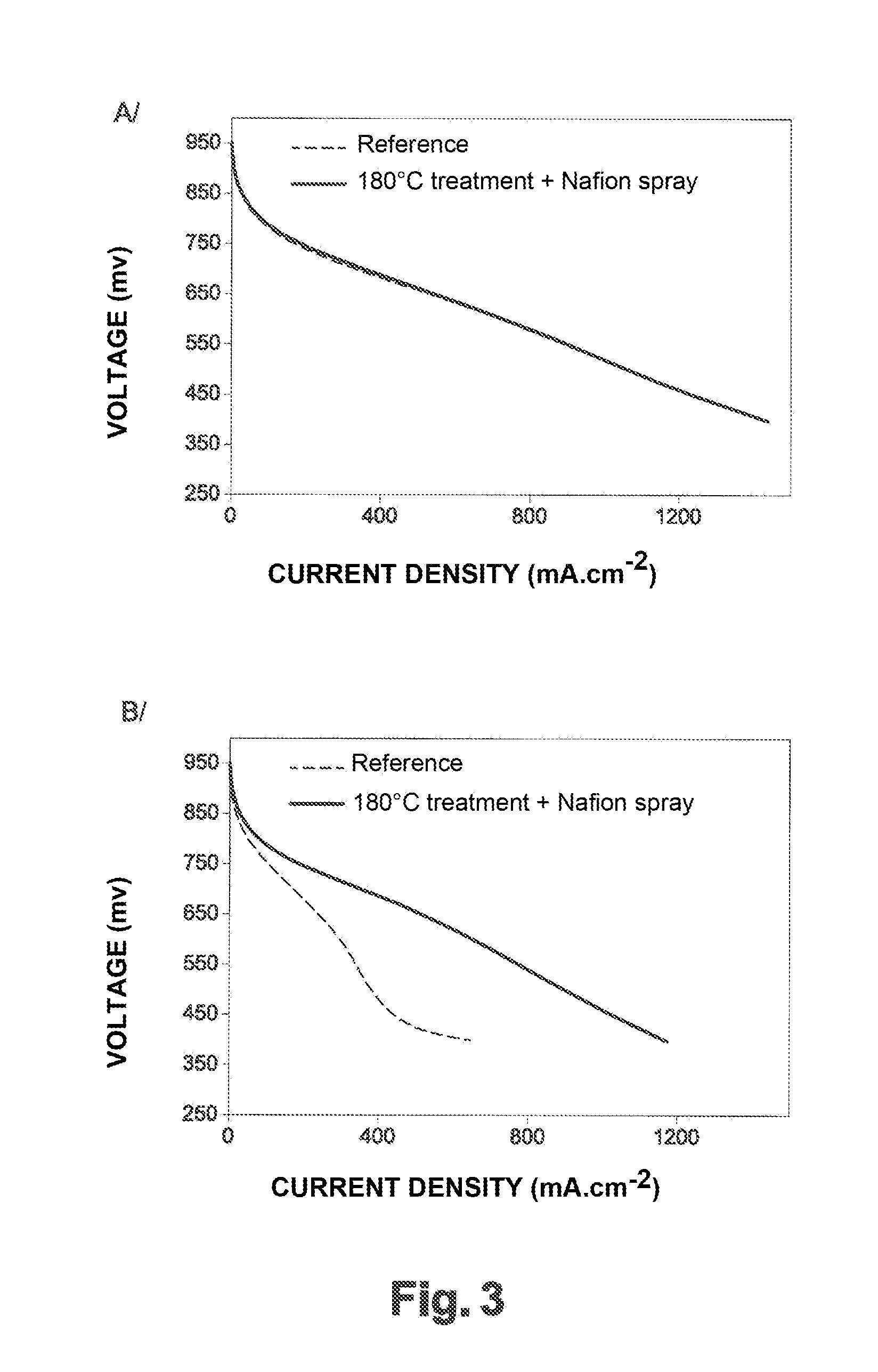Membrane-electrodes assembly for proton exchange fuel cells (PEMFC), and manufacturing method
- Summary
- Abstract
- Description
- Claims
- Application Information
AI Technical Summary
Benefits of technology
Problems solved by technology
Method used
Image
Examples
embodiment
OF EMBODIMENT
[0134]The present invention will be further illustrated in relation with a specific embodiment, that is, a MEA comprising:[0135]an Aquivion®-type membrane (3);
[0136]As a reminder, Aquivion®, for example, commercialized by Solvay, has a glass transition temperature, noted Tg, in the range from 140 to 150° C. and the following structure (k being an integer):
[0137]an anode and a cathode (2) also comprising Aquivion®.
[0138]The electrodes typically contain:[0139]1 / 72% of platinum-type catalyst dispersed on a carbonaceous support, for example, carbon black. The assembly is formed of 50% of platinum and of 50% of carbon;[0140]2 / 28% of ionomer, in the case in point, Aquivion®.
[0141]The % should be understood as mass percentages in the dry catalytic layer:[0142]a Nafion®-based layer (4);
[0143]As a reminder, Nafion®, for example, commercialized by Dupont, has a glass transition temperature, noted Tg, in the order of 90-100° C. and the following structure (k being an integer):
[0...
PUM
 Login to View More
Login to View More Abstract
Description
Claims
Application Information
 Login to View More
Login to View More - R&D
- Intellectual Property
- Life Sciences
- Materials
- Tech Scout
- Unparalleled Data Quality
- Higher Quality Content
- 60% Fewer Hallucinations
Browse by: Latest US Patents, China's latest patents, Technical Efficacy Thesaurus, Application Domain, Technology Topic, Popular Technical Reports.
© 2025 PatSnap. All rights reserved.Legal|Privacy policy|Modern Slavery Act Transparency Statement|Sitemap|About US| Contact US: help@patsnap.com



